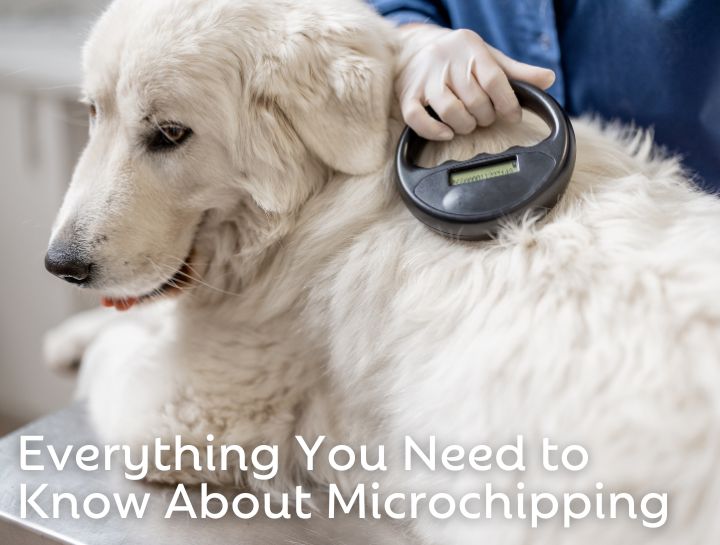Let’s Talk About the Importance of Microchipping

If you think your pet isn’t at risk of being lost, you may be surprised to learn that one in three pets go missing in their lifetime. Door-dashers and escape artists aside, even a mild-mannered pet might take the opportunity to explore the big wide world when given the chance. A microchip is a safe, permanent, and reliable identification that can significantly increase your chances of a happy reunion in the event your pet ever finds itself missing.
Today we’re addressing frequently asked questions when it comes to microchipping. Let’s get started!
My pet already has an ID tag. Do they really need a microchip?
Even if your pet normally wears a collar with an ID tag, it’s possible for them to fall off, break, or be taken off if a pet gets loose or gets lost. When this happens, they’re stuck with no identification. Microchips are implanted beneath the skin and give pets a permanent ID number. This means that as long as your registration information is up to date, any clinic or shelter that scans your pet’s microchip will be able to call the microchip manufacturer, provide them with your pet’s ID number, and get in touch with you.
Microchips also serve as proof of ownership, so if your pet gets picked up by a good Samaritan who mistakes them for a stray, you’ll have far fewer issues getting them back if they’ve already been microchipped. In fact, one study found that dogs with microchips were returned to their owners 52.2% of the time and cats with microchips were returned to their owners at a rate of 38.5%. Unfortunately, the same study discovered that pets who were not microchipped were only reunited at the rates of only 21.9% for dogs and 1.8% for cats.
Will microchipping hurt my pet?
Microchipping is a relatively painless process for both dogs and cats, much like giving a vaccine to your pet. It doesn’t require anesthesia and most pets take it well with a little bit of encouragement and a few treats. The microchip itself is no larger than a grain of rice and is inserted between the shoulder blades through a syringe that’s just a smidge bigger than what you’d expect from a routine injection. Once the microchip is placed, you’ll have to register your pet’s microchip number on the manufacturer’s website, update your contact information, and voila! You’re done.
How does a microchip work?
When an animal is found and taken to a veterinary hospital or shelter, one of the first things the staff will do is scan the pet for a microchip. When a scanner passes over an area where a microchip is inserted (usually between the shoulder blades), the microchip transmits a unique identification code to the scanner which is then displayed on the screen. The team will then notify the microchip manufacturer, who will contact you directly, so your personal information stays secure.
Booking your appointment
Getting your pet microchipped is one of the most important decisions you can make for the safety and wellbeing of your pet.
To schedule your appointment, call us at (845) 361-3600 or book your appointment online. Still have questions? Contact us at (845) 361-3600 or use our online form to speak to a member of our medical team.
While we hope it never happens, pet owners need to be prepared if their dog or cat goes missing. A microchip is a simple, affordable and reliable safeguard that can truly give your pet a new leash on life. Here’s to more happy reunions!
